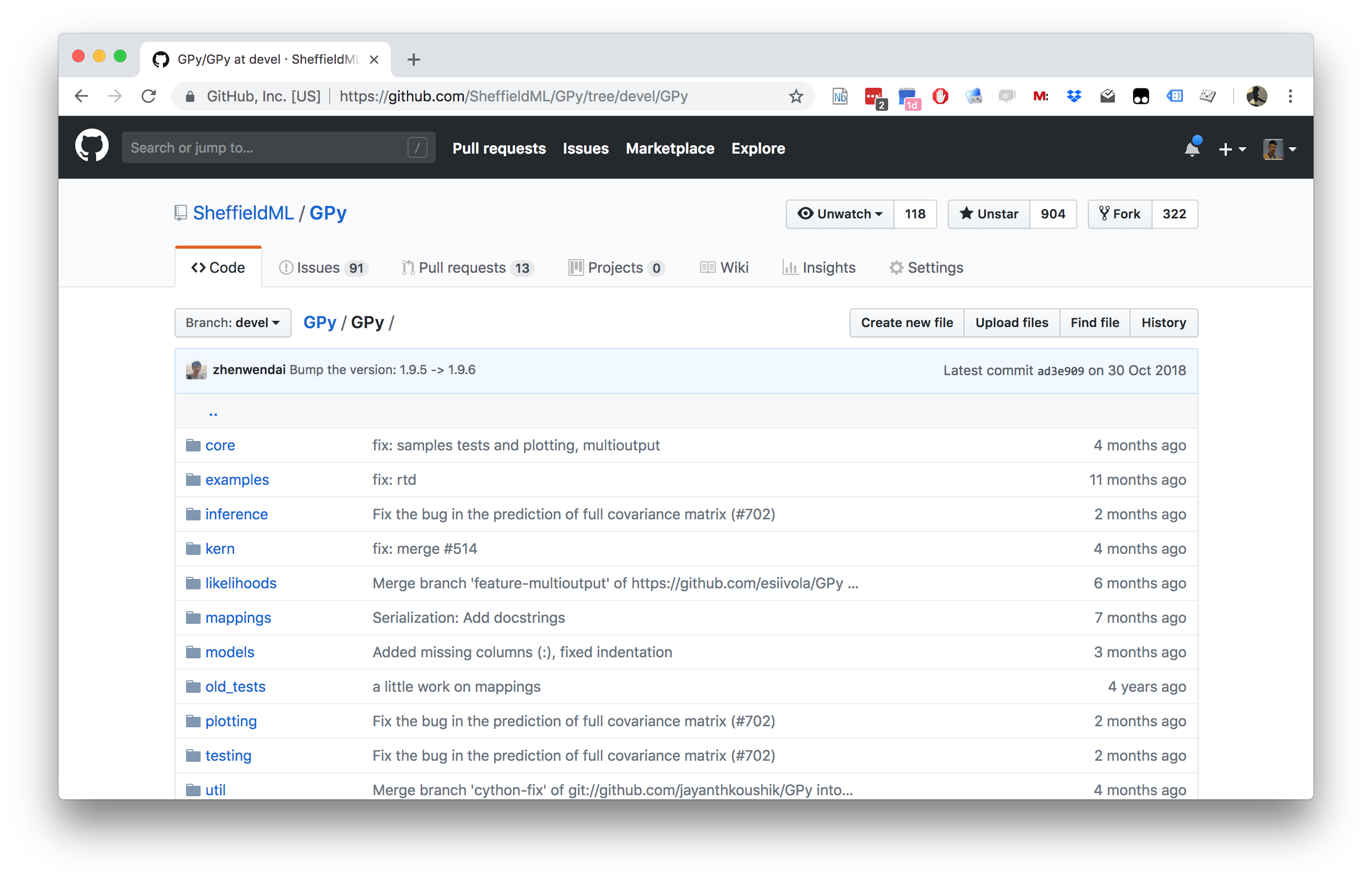Unsupervised Learning with Gaussian Processes
GPy: A Gaussian Process Framework in Python

GPy: A Gaussian Process Framework in Python
- BSD Licensed software base.
- Wide availability of libraries, ‘modern’ scripting language.
- Allows us to set projects to undergraduates in Comp Sci that use GPs.
- Available through GitHub https://github.com/SheffieldML/GPy
- Reproducible Research with Jupyter Notebook.
Features
- Probabilistic-style programming (specify the model, not the algorithm).
- Non-Gaussian likelihoods.
- Multivariate outputs.
- Dimensionality reduction.
- Approximations for large data sets.
Difficulty for Probabilistic Approaches
Propagate a probability distribution through a non-linear mapping.
Normalisation of distribution becomes intractable.
Difficulty for Probabilistic Approaches
Propagate a probability distribution through a non-linear mapping.
Normalisation of distribution becomes intractable.
Difficulty for Probabilistic Approaches
Propagate a probability distribution through a non-linear mapping.
Normalisation of distribution becomes intractable.
Getting Started and Downloading Data
Principal Component Analysis
- What is the right shape \(n\times p\) to use?
Gaussian Process Latent Variable Model
CMU Mocap Database
CMU Motion Capture GP-LVM
CMU Mocap Visualisation
Example: Latent Doodle Space
Example: Latent Doodle Space
Generalization with much less Data than Dimensions
Powerful uncertainly handling of GPs leads to surprising properties.
Non-linear models can be used where there are fewer data points than dimensions without overfitting.
(Baxter and Anjyo,
2006)
Example: Continuous Character Control
- Graph diffusion prior for enforcing connectivity between motions. \[\log p(\mathbf{X}) = w_c \sum_{i,j} \log K_{ij}^d\] with the graph diffusion kernel \(\mathbf{K}^d\) obtain from \[K_{ij}^d = \exp(\beta \mathbf{H}) \qquad \text{with} \qquad \mathbf{H} = -\mathbf{T}^{-1/2} \mathbf{L} \mathbf{T}^{-1/2}\] the graph Laplacian, and \(\mathbf{T}\) is a diagonal matrix with \(T_{ii} = \sum_j w(\mathbf{ x}_i, \mathbf{ x}_j)\), \[L_{ij} = \begin{cases} \sum_k w(\mathbf{ x}_i,\mathbf{ x}_k) & \text{if $i=j$} \\ -w(\mathbf{ x}_i,\mathbf{ x}_j) &\text{otherwise.} \end{cases}\] and \(w(\mathbf{ x}_i,\mathbf{ x}_j) = || \mathbf{ x}_i - \mathbf{ x}_j||^{-p}\) measures similarity.
Levine et al.
(2012)
Character Control: Results
Data for Blastocyst Development in Mice: Single Cell TaqMan Arrays
Principal Component Analysis
PCA Result
GP-LVM on the Data
Blastocyst Data: Isomap
Blastocyst Data: Locally Linear Embedding
Thanks!
- twitter: @lawrennd
- podcast: The Talking Machines
- newspaper: Guardian Profile Page
- blog: http://inverseprobability.com
References
Baxter, W.V., Anjyo, K.-I., 2006. Latent doodle space, in: EUROGRAPHICS.
Vienna, Austria, pp. 477–485. https://doi.org/10.1111/j.1467-8659.2006.00967.x
Guo, G., Huss, M., Tong, G.Q., Wang, C., Sun, L.L., Clarke, N.D.,
Robsonemail, P., 2010. Resolution of cell fate decisions revealed by
single-cell gene expression analysis from zygote to blastocyst.
Developmental Cell 18, 675–685. https://doi.org/10.1016/j.devcel.2010.02.012
Levine, S., Wang, J.M., Haraux, A., Popović, Z., Koltun, V., 2012.
Continuous character control with low-dimensional embeddings. ACM
Transactions on Graphics (SIGGRAPH 2012) 31.